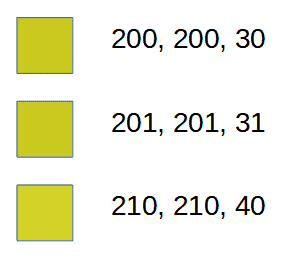1. 什么是隐写术?
在当今数字化高度互联的世界中,数据安全变得越来越重要。加密技术在我们日常生活中的线上线下行为中扮演着越来越重要的角色,而隐写术(Steganography)是与加密密切相关的另一项技术。
隐写术的核心思想是将一段数据隐藏在另一段数据中,同时尽量不让外界察觉这段隐藏数据的存在。 作为载体的数据可以是视频、图像、文本文件,甚至在非数字场景下也可以是物理对象。同样,被隐藏的数据也可以是多种形式的,但在数字世界中,最常见的做法是将信息隐藏在图像中,这被称为“数字图像隐写术”。
2. 隐写术与加密的区别
隐写术和加密虽然都属于信息安全领域,但它们的目标不同:
- 加密(Cryptography) 的目标是让信息即使被截获也无法被解读;
- 隐写术(Steganography) 的目标则是让信息的存在本身不被发现。
换句话说,加密的重点在于“信息内容保密”,而隐写术的重点在于“信息存在保密”。
举个例子:
如果你收到了一段加密文本,即使你看不懂,你也会知道这是一段加密信息。
但如果你收到一张看似普通的图片,而其中隐藏了信息,除非你知道它的存在,否则你根本不会察觉它被做了手脚。
3. 常见隐写技术
物理隐写术
在数字时代之前,人们也使用过很多物理形式的隐写术:
隐形墨水:在信件中使用隐形墨水书写信息;
隐藏文字:在一段看似无关的文字中,隐藏信息。比如每行首字母组成一个密码:
T his H eart E very上述三行的首字母组合成 “THE”,就是隐藏的信息。
音乐隐写:冷战时期,有情报人员将机密信息编码成乐谱中的音符音高,从而实现信息传递。
数字隐写术
如今,数字隐写术的应用更加广泛,不仅信息容量更大,而且隐藏方式也更加复杂和隐蔽。最常见的是:
- 图像隐写术(Image Steganography):将信息嵌入图像文件中;
- 音频/视频隐写术:利用声音或视频的冗余空间隐藏数据;
- 文本隐写术:在文本中通过格式、空格、标点等手段隐藏信息。
接下来我们将重点介绍一种常见的图像隐写技术:LSB(Least Significant Bit)隐写术。
4. LSB 隐写术详解
LSB(Least Significant Bit)是最常见、最基础的一种图像隐写技术。
原理
LSB 的核心思想是:用隐藏信息的二进制位替换图像像素值的最低有效位(LSB)。
为什么可以这么做?因为人眼对像素值的微小变化并不敏感。例如:
原始像素值为:200, 200, 30
对应的二进制为:
11001000, 11001000, 00011110
如果我们修改最低位,变成:
11001001, 11001001, 00011111
也就是像素值变为:201, 201, 31,肉眼几乎无法察觉图像的变化。
示例图

如上图所示,三个像素值非常接近,人眼很难分辨出细微差异。
✅ 优点:
- 修改后的图像与原图几乎无差别;
- 实现简单,适合初学者理解。
❌ 缺点:
- 容易被统计分析检测;
- 图像一旦被压缩、裁剪或缩放,隐藏信息可能会丢失。
⚠️ 注意:使用 LSB 技术时,建议不要修改太多位(通常只修改 1~2 位),否则图像会变得容易察觉。
5. 数字隐写术的实际应用
虽然隐写术听起来像是“黑客技术”,但其实它也有合法用途,比如:
- 版权水印:将作者信息或版权标识隐藏在图像中;
- 数字取证:用于追踪文件来源或篡改痕迹;
- 安全通信:某些组织或机构用于安全传输敏感信息。
但与此同时,它也常常被用于恶意用途:
- 恶意软件传播:攻击者将木马或病毒隐藏在看似无害的图片或文档中;
- APT攻击:高级持续性威胁中,攻击者通过隐写术长期潜伏并传输数据。
由于大多数杀毒软件只检查文件内容,而不会深入分析图像中的隐藏数据,因此使用隐写术的恶意程序很容易绕过传统防护机制。
目前,隐写术检测技术仍处于发展阶段,尚未成熟,这也给恶意行为提供了可乘之机。
6. 小结
本文介绍了隐写术的基本概念、与加密的区别、常见的物理与数字隐写技术,重点讲解了 LSB 隐写术的原理与优缺点,并讨论了它在现实世界中的应用。
✅ 隐写术是一种“藏而不显”的信息安全技术;
✅ LSB 是图像隐写中最基础、最常用的方法;
❌ 但 LSB 容易被破坏或检测,不适合高安全性场景;
⚠️ 隐写术也可能被用于恶意用途,需引起警惕。
希望这篇文章能帮助你更好地理解隐写术这项技术。下篇文章我们再聊别的安全相关话题,保持警惕,安全第一!